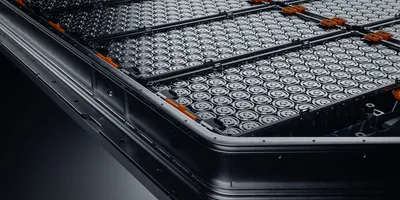f ScienceA research team led by Professor Jihyun Hong from the Department of Battery Engineering Department of the Graduate Institute of Ferrous & Eco Materials Technology at POSTECH, along with Dr. Gukhyun Lim, has developed a groundbreaking strategy to enhance the durability of lithium-rich layered oxide (LLO)*1 material, a next-generation cathode material for lithium-ion batteries (LIBs). This breakthrough, which significantly extends battery lifespan, was published in the renowned energy journal Energy & Environmental Science.
Lithium-ion batteries are indispensable in applications such as electric vehicles and energy storage systems (ESS). The lithium-rich layered oxide (LLO) material offers up to 20% higher energy density*2 than conventional nickel-based cathodes by reducing the nickel and cobalt content while increasing the lithium and manganese composition. As a more economical and sustainable alternative, LLO has garnered significant attention. However, challenges such as capacity fading and voltage decay during charge-discharge cycles have hindered its commercial viability.
While previous studies have identified structural changes*3 in the cathode during cycling as the cause of these issues, the exact reasons behind the instability have remained largely unclear. Additionally, existing strategies aimed at enhancing the structural stability of LLO have failed to resolve the root cause, hindering commercialization.
The POSTECH team focused on the pivotal role of oxygen release in destabilizing the LLO structure during the charge-discharge process. They hypothesized that improving the chemical stability of the interface between the cathode and the electrolyte could prevent oxygen from being released. Building on this idea, they reinforced the cathode-electrolyte interface by improving the electrolyte composition, which resulted in a significant reduction in oxygen emissions.
The research team’s enhanced electrolyte maintained an impressive energy retention rate of 84.3% even after 700 charge-discharge cycles, a significant improvement over conventional electrolytes, which only achieved an average of 37.1% energy retention after 300 cycles.
The research also revealed that structural changes on the surface of the LLO material had a significant impact on the overall stability of the material. By addressing these changes, the team was able to dramatically improve the lifespan and performance of the cathode while also minimizing unwanted reactions like electrolyte decomposition inside the battery.
Professor Jihyun Hong commented, “Using synchrotron radiation, we were able to analyze the chemical and structural differences between the surface and interior of the cathode particles. This revealed that the stability of the cathode surface is crucial for the overall structural integrity of the material and its performance. We believe this research will provide new directions for developing next-generation cathode materials.”
This research was supported by the Ministry of Trade, Industry and Energy through the Korea Institute for Advancement of Technology, and the Ministry of Science and ICT through the National Research Foundation of Korea, with funding for 2024.
DOI: https://doi.org/10.1039/D4EE02329C
1. Li-/Mn-rich Layered Oxides (LLO)
In one of the commercially available lithium battery cathode materials with a layered structure, some of the transition metals have been substituted with lithium. Unlike the widely used nickel-based ternary layered materials, more than 55% of the transition metal content in this material consists of manganese.
Advanced Lab Management Certificate
The Advanced Lab Management certificate is more than training—it’s a professional advantage.
Gain critical skills and IACET-approved CEUs that make a measurable difference.
2. Energy density
The specific energy of an energy material, expressed as energy per unit weight, can be calculated as [capacity x voltage]. Therefore, enhancing either the voltage or the energy storage capacity can lead to an improvement in energy density.
3. Structural change
This refers to the phenomenon where the regular atomic arrangement changes to a new phase due to various irreversible changes during charge-discharge cycles, such as oxygen release and transition metal migration. In layered materials like LLO, phase transitions to rocksalt or spinel phases can occur.
-Note: This news release was originally published by Pohang University of Science and Technology. As it has been republished, it may deviate from our style guide.












